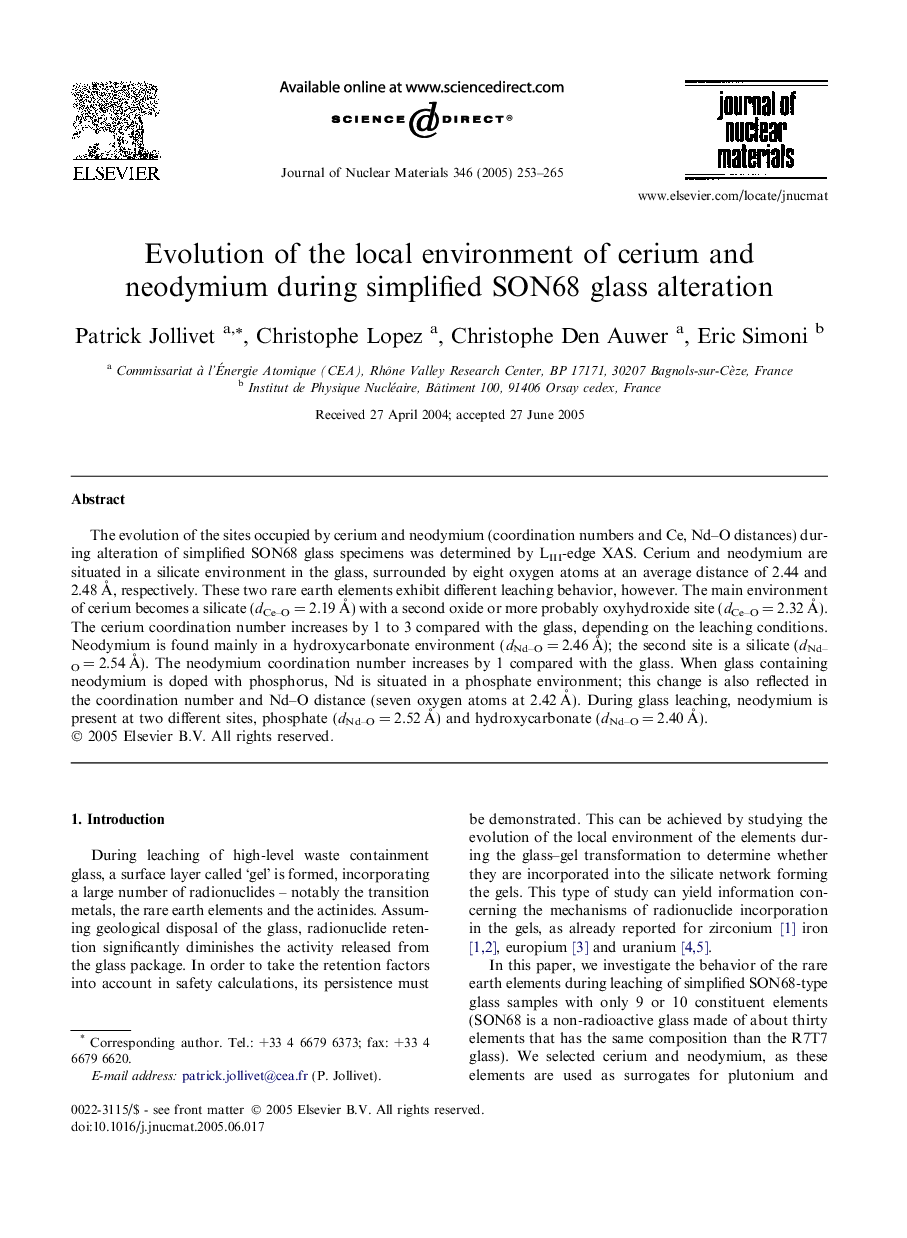| Article ID | Journal | Published Year | Pages | File Type |
|---|---|---|---|---|
| 9793587 | Journal of Nuclear Materials | 2005 | 13 Pages |
Abstract
The evolution of the sites occupied by cerium and neodymium (coordination numbers and Ce, Nd-O distances) during alteration of simplified SON68 glass specimens was determined by LIII-edge XAS. Cerium and neodymium are situated in a silicate environment in the glass, surrounded by eight oxygen atoms at an average distance of 2.44 and 2.48Â Ã
, respectively. These two rare earth elements exhibit different leaching behavior, however. The main environment of cerium becomes a silicate (dCe-OÂ =Â 2.19Â Ã
) with a second oxide or more probably oxyhydroxide site (dCe-OÂ =Â 2.32Â Ã
). The cerium coordination number increases by 1 to 3 compared with the glass, depending on the leaching conditions. Neodymium is found mainly in a hydroxycarbonate environment (dNd-OÂ =Â 2.46Â Ã
); the second site is a silicate (dNd-OÂ =Â 2.54Â Ã
). The neodymium coordination number increases by 1 compared with the glass. When glass containing neodymium is doped with phosphorus, Nd is situated in a phosphate environment; this change is also reflected in the coordination number and Nd-O distance (seven oxygen atoms at 2.42Â Ã
). During glass leaching, neodymium is present at two different sites, phosphate (dNd-OÂ =Â 2.52Â Ã
) and hydroxycarbonate (dNd-OÂ =Â 2.40Â Ã
).
Related Topics
Physical Sciences and Engineering
Energy
Nuclear Energy and Engineering
Authors
Patrick Jollivet, Christophe Lopez, Christophe Den Auwer, Eric Simoni,
